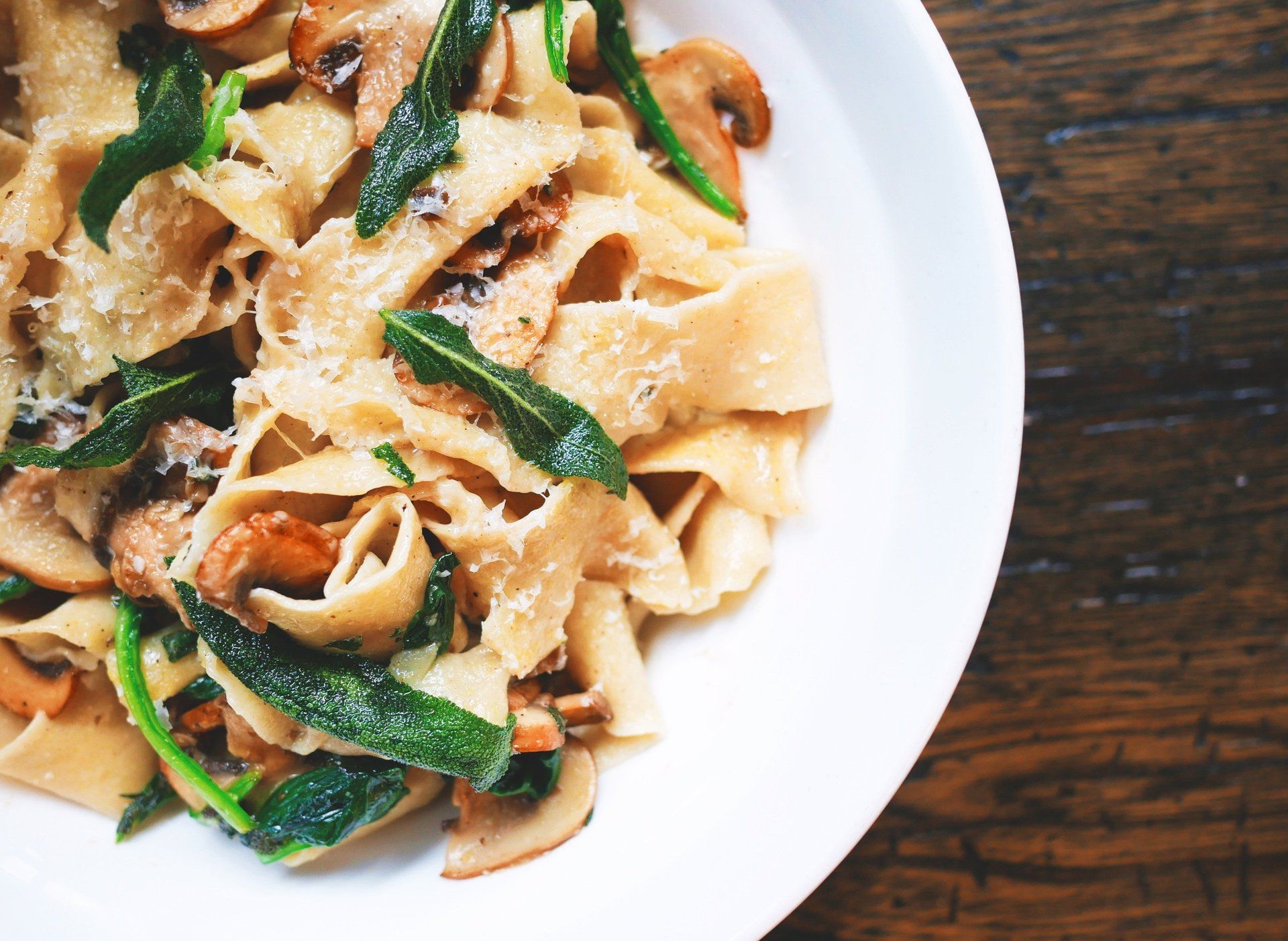HOME | MY BLOG

Can early morning fasted cardio help you lose fat faster than other cardio methods? In order to comprehend how cardio on an empty stomach could be beneficial, we first need to understand why it would work. The basic idea behind fasted cardio is that your body will be more likely to use its own fat stores for fuel instead of the food you just ate, and those stored fats may be accessed faster depending on the type of diet you follow. The physiology behind why fasted cardio will help you lose more fat during your cardio session is not as simple as just stated. The metabolic mechanisms that enable fasted cardio to help you oxidize more fat is much more complex. In short— yes, it does work. Fasted cardio works because it helps you to become more efficient at using fat for fuel and because your hormones and metabolism are all in the perfect alignment for fatty acid mobilisation. Metabolising Carbs vs Metabolising Fats Carbohydrates are your body’s most readily available fuel source, but only a limited amount of carbohydrates can be stored in the body. The liver and skeletal muscles are the storage sites for carbohydrates (glucose), and the stored form of glucose is glycogen. A well-nourished adult can store approximately 500 grams or 2,000 kcal of glycogen. Of this, approximately 400 grams are stored as muscle glycogen, 90-110 grams as liver glycogen, and 25 grams circulate in the blood as glucose. For glucose to enter the liver and skeletal muscle, it needs help from the hormone insulin. Insulin is the main regulator of glucose transport. Insulin binds to an insulin receptor on cell membranes and causes GLUT4 transporters to surface on the membrane. These GLUT4 transporters act like doorways that allow glucose to move into liver and muscle cells. Once glucose enters the cells, it undergoes a process called phosphorylation where it is trapped in those cells as glycogen to be used for energy. Lipids or fats on the other hand are stored as triacylglycerol (triglycerides) in muscle, liver and fat cells. This is long-term energy storage in contrast to glycogen. A normal adult can store 2,000 to 3,000 calories of glycogen in liver and muscle and even a lean person can store up to 75,000 calories of triacylglycerol in adipose tissue (fat cells). The beginning process of breaking down these stored lipids is called lipolysis. Lipolysis is the hydrolysis of triglycerides into free fatty acids. Lipolysis as well as glycogenolysis (breakdown of glycogen) is regulated by epinephrine. Epinephrine is released into the blood from the adrenal medulla of the kidney at the onset of exercise and begins breaking down carbohydrates and eventually lipids to use for energy during your workout. The metabolic cascade begins with epinephrine binding to beta-adrenergic receptors on adipose tissue and skeletal muscle fibers. This results in a change of a specific membrane attached to G protein. The activated G protein interacts with adenylyl cyclase and increases its ability to change an ATP molecule into cyclic AMP (cAMP) and inorganic phosphate (PPi). The cAMP activates protein kinase and stimulates the breakdown of glycogen, and protein kinase also phosphorylates hormone-sensitive lipase to start lipolysis. Some studies have shown that fasting can increase the number of beta-adrenergic receptors in adipose tissue. Once glycogen is released from the liver and muscle, it goes directly through glycolysis to make energy. However, fatty acids must first be released from the triglyceride molecule, and then they have to be moved into the mitochondria to be further degradated by beta-oxidation. This is a much longer process because in order to be oxidized, fatty acids— and the transport of the fatty acids from the cytosol into the mitochondria— require the help of carnitine. Carnitine shuttles the fatty acids across the mitochondrial membrane. The beta-oxidation then begins and the fatty acids are transformed into energy (ATP). So as you can see, it is a much longer process to metabolize stored fat than it is for stored carbohydrates. Even in a fasted state, it can take up to one hour to deplete glycogen stores and initiate lipolysis and beta-oxidation. However, this crossover concept of shifting energy sources from carbohydrates to lipids can be increased depending on hormone regulation, diet and exercise intensity level. Lower Insulin and Increased Growth Hormone First thing in the morning, after you’ve been fasting all night, your body’s natural levels are optimal for fat loss. After not eating for the last 10 or more hours, your insulin levels are very low. Insulin is an inhibitor of lipolysis by blocking the metabolic process of allowing hormone-sensitive lipase to begin releasing fatty acids from triglyceride molecules. When insulin levels are low, your body is better able to release and transport fatty acids into the mitochondria to be oxidized. In the morning, your circulating blood glucose (blood sugar) is also low. Some people might think this is a bad thing, and it can be if it ends up impairing your cardio performance. However, if it doesn’t, low blood sugar forces your body to begin using stored fats for energy because there is not enough glucose to sustain your workout. Finally, you will also experience higher growth hormone levels. Growth hormone is highest while you are sleeping because it is secreted in response to fasting. Growth hormone is highly catabolic to fat cells because it increases the rate of whole-body lipolysis by increasing cAMP and stimulating hormone-sensitive lipase. Growth hormone and insulin are antagonists. When one is high, the other is low. Since your insulin levels are low upon waking, your growth hormone levels are higher. Time Your Carbs The timing of when you eat carbohydrates throughout the day and the kind of carbohydrates you eat also contribute to the shifting of carbohydrates to fats for fuel. To make your fasted morning cardio session even more effective, do not eat high-glycemic carbohydrates later in your day, and especially not for your last meal. The glycemic index (GI) of a carbohydrate indicates how quickly blood glucose levels will rise after once consumed. There are three categories of GI: high, moderate, and low. The higher the GI, the faster the glucose is absorbed, used, and depleted in the body. In general, the more refined the carbohydrate in the food, the higher the glycemic index. Examples of refined food include processed white flour foods, crackers, rice, noodles, many ready-to-eat cereals, etc. In contrast, high-fiber, high-protein and high-fat foods have low-glycemic indexes. So if you eat pasta for dinner, it may take longer for you to deplete your glycogen stores during your fasted cardio as opposed to making your last meal of the day a lean source of protein and a low GI carbohydrate, such as chicken and a green vegetable. Exercise Intensity The intensity level of exercise also plays a role in substrate utilization. A person’s respiratory exchange (RER) ratio signifies the primary fuel source being used during exercise, and it increases in proportion to the increase in exercise intensity. As exercise intensity increases, the RER increases, indicating the primary fuel source is carbohydrate oxidation, whereas that of lipid oxidation decreases. The release of fatty acids into the blood from adipose tissue stores rises in parallel with exercise intensity to approximately 50 percent of VO2 max, and then gradually declines. Glycogen utilisation increases exponentially with increasing exercise intensity. Higher-intensity aerobic exercise will inhibit stored fats from being used as the primary energy source, so prolonged low- to moderate-intensity is recommended for fasted cardio. Regularly performed aerobic exercise can play a significant role in fuel utilization during exercise. Trained skeletal muscle has a larger capacity for oxidative metabolism than untrained muscle. This means that a trained person will increase fat oxidation and decrease carbohydrate oxidation faster than an untrained individual, and their ability to exercise to exhaustion is vastly increased. The Bottom Line To sum it all up, fasted cardio can be beneficial in burning more fat if you follow a low-glycemic diet, limit the amount of carbohydrates you eat later in the day, and perform prolonged low- to moderate-intensity aerobic exercise. Because of the longer process to utilize the beta-oxidation process, a 20-minute high-intensity workout is not going to cut it. The depletion of glycogen stores could take up to 60 minutes depending on a person’s diet and training level. Higher trained individuals can deplete glycogen and start using fat sooner than novice exercisers. There are situations however, where I would not recommend fasted cardio, such as if your cardio sessions are suffering because of a lack of energy or you suffer from hypoglycemia. Don’t forget that there is an afterburn effect (excess post-exercise oxygen consumption— EPOC) that helps you burn calories even after you’re done exercising. To get this effect, you need to be able to train at a decent intensity level. Are you a morning person? If so, that early morning cardio might be for you.

We all see things about ourselves, our relationships, and our world that we want to change. Often, this desire leads us to take action toward inner work that we need to do or toward some external goal. Sometimes, without any big announcement or momentous shift, we wake up to find that change has happened, seemingly without us. This can feel like a miracle as we suddenly see that our self-esteem really does seem to be intact, or our partner actually is helping out around the house more. We may even wonder whether all of our hard work had anything to do with it, or if it just happened by way of grace. As humans, sometimes we have relatively short attention spans, and we can easily lose track of time. We may worry about a seedling in a pot with our constant attention and watering for several weeks only to find ourselves enjoying the blooms it offers and wondering when that happened, and how we didn't notice it. Nature, on the other hand, has infinite patience and stays with a thing all the way through its life. This doesn't mean that our efforts play no part in the miracle of change--they do. It's just that they are one small part of the picture that finally results in the flowering of a plant, the shifting of a relationship, the softening of our hearts. The same laws that govern the growth of plants oversee our own internal and external changes. We observe, consider, work, and wonder, tilling the soil of our lives, planting seeds, and tending them. Sometimes the hard part is knowing when to stop and let go, handing it over to the universe. Usually this happens by way of distraction or disruption, our attention being called away to other more pressing concerns. And it is often at these times, when we are not looking, in the silence of nature's embrace, that the miracle of change happens.

Many of us believe life will be better by reaching those goals, so we make our plans, put our nose to the grindstone, and work our butts off until we’re there. Many high achievers I’ve worked with over the years reach their goals, but they end up missing their lives in the process–and not in a trivial “I’m-working-too-hard-to-have-friends” kind of way. No, they reach their goals and discover they were the wrong goals and the wrong path to get there. No one taught them how to set goals that would give them the life and the career they wanted. Here’s how to set the right goals for the life you actually want: 1. STOP SETTING GOALS FOR THE WRONG REASON The first step to setting goals that will bring you an awesome life is to stop setting goals that will bring you a sucky life. Most goals are about a destination. “I want a million dollars.” “I want enlightenment.” “I want a truck.” If you tend to set your goals based on the destination, and don’t consider the journey, try switching it around. 2. CHOOSE A GOAL TO CREATE A JOURNEY Instead of setting life goals, think about setting a life direction. Figure out the things that would create a fun, meaningful, compelling journey. Ask yourself: How do I want to spend my time? What daily activities make me want to leap out of bed? What do I want to learn? Who do I want to hang out with? Talk with? Collaborate with? Now set your goal. Choose one that will create the journey you just designed. In fact, the specific goal you set is almost arbitrary–it’s simply setting a direction so the pursuit itself gives you the life that you want. With the right journey, it won’t even matter if you reach your goal. For example, one of my clients, Mary, a mid-career finance executive, had an original life goal of making a small fortune. That goal led to an education in securities and securities law, a life of financial analysis on with some of the biggest banks, and a community of financial professionals. Despite the money, Mary feels like life is slipping by in a grey fog. Any number of goals could send Mary on a different journey. Here are her answers to the above questions: How do I want to spend my time? “Helping people.” What activities make me want to leap out of bed? “Problem solving, using my body, and public speaking.” What do I want to learn? “History, anthropology, and urban design.” Who do I want to hang out with? ”Creative, ambitious, motivated people who expose me to new ways of thinking and challenge my assumptions.” Many possible goals can bring about this journey for Chris. He could help an immigrant neighbour hood plan annual events to preserve its cultural identity; work on designing her city’s response plan for weather emergencies; or champion a real estate development in a historic section of town. These goals are wildly different from one another, but what they all share is that the journey to reach them will motivate the activities, learning, and community that Mary really wants out of life. 3: FAST FOREWARD 10 YEARS FROM NOW. WHAT DOES YOUR LIFE LOOK LIKE? This is my favourite question that I like to ask myself, and my clients too. The way we play in life now with our habits rituals and behaviours will absolutely undeniably dictate our journey and destination over the next 10 years. 10 years may sound like it’s a long way away but I know from my own experience my 30’s have literally just gone in the blink of an eye. In hind- sight the last decade has really shown me that life is too short to be compromising and accommodating your life to suit other’s limitations (including our own inner limitations) and models of the world. You need to work with and collaborate with those that reflect the life and journey you want to live and experience. Get real with yourself, What habits, rituals, behaviours need to go ?????? What habits, rituals, behaviours must you adopt???? What people do you need in your life helping you grow into your journey? What people, environments and things must you leave behind to clear the path for you? (This one’s a hard one to take on board and the very reason most people will fail living a fulfilling journey and life, purely because you are attached to comfort even if its’ not desirable) REMEMBER EVERY LEVEL HAS A DEVIL, How many levels do you need to client in your journey? Do you find yourself looping every time to reach the gate keepers door???? 4. IF THE GOAL DOESN’T WORK, CHANGE IT As you can see, the goal is really just a way of making sure we take a meaningful journey. Some journeys are so much fun, people stay on them forever. My actor friends often say, “Why would I retire? What I do isn’t work; it’s pure fun!” But if your job involves staring at a screen and filing TPS reports, you may not share that sentiment. As much press as persistence gets, keep in mind that you can always change your direction. Your goal is there to shape your life in a way that delights you, not enslaves you. If the pursuit of the goal is draining your life, then why keep it? We adopt goals for one reason and one reason only: to change our lives. Rather than adopting a goal you hope will change your life once you reach it, do it the other way around. Choose the journey that for you would be awesome–the activities, personal growth, and friends. Then choose a goal that acts as a compass to give you that life as part of the journey. And if you ever feel your direction needs changing, change goals. Because it’s not about where you end up, it’s about the life you live on the way. Your life is too precious to settle for less than extraordinary.

The power of a refeed can help improve your situation, especially if you have low leptin levels and a slower metabolism. Learn more here.Been dieting for a while and not seeing any results? Feel like your starving all the time but meanwhile fat loss is a foreign word to you. If you are finding yourself in this situation, you are likely suffering the consequences of low leptin levels. LEPTIN: Leptin, part of the cytokine family, is synthesized primarily by your adipose tissue, with a small contribution coming from the skeletal muscles and brain. The synthesis rate of leptin is mostly controlled by both numbers of body fat cells as well as size of your current bodyfat cells.Leptin's main function in the body is to play a significant role in regulating both hunger, food intake and energy expenditure. As leptin levels fall, the greater your cravings become for all those wonderful foods that you used to eat when you weren't dieting.So if you are experiencing more intense cravings on a daily basis, take some relief in knowing that this is actually your body responding to a physiological signal, not just your mind playing nasty games with you and making your life miserable.Along with hunger pangs, leptin also signifies a slowing metabolism. Whenever you are on a hypocalorie diet for an extended period of time, your body will begin to slow its metabolic functions in an effort to 'make due' with the amount of fuel that it is being given. Know what this means for you? Little or no fat loss. Not a good situation. RAISING LEPTIN LEVELS: So, your goal is to periodically kick your leptin levels back up so as to avoid the intense physical hunger and the slowed-to-a-crawl metabolism. Some people will chose to have cheat days in an effort to accomplish this goal, which is basically a meal or whole day of professed binging on everything in sight.This may not be the best course of action however. Leptin is highly responsive to glucose metabolism so when doing a refeed, you will benefit much more if the majority of your excess calories are coming from good sources of carbohydrates that will turn into glucose. When done this way, leptin levels will show a significant rise over if you had eaten a surplus of calories coming from more protein, fat, or fructose. REFEEDING: How much should you refeed yourself? This will depend on how long you have been dieting, how intense your diet is, and your current level of bodyfat. Those who are at a lower level of bodyfat will need to refeed more often than those who aren't. Similarly, the more extreme the diet being followed, the more intense the refeed.Basically this has to do with how low leptin levels are. The lower the levels, the more calories above maintenance you will be needed to bring them back up.Usually, a refeed should consist of 20-50% more calories than required for maintenance for 12 hours to two days. The higher you decide to bring your calories, the shorter period of time you will want to refeed for. If your leptin levels have almost dropped of the earth, you will want to refeed for a full week, but keep your calories slightly more moderate.The downside to a refeed is that sometimes you will have to accept a small amount of fat gain. But, looking on the bright side, when you go back to your diet, your metabolism will be humming again and you should jump start the fat loss process. In a few individuals, they will actually become leaner during the process; however this is not the norm.You can include some of your more desired foods in the refeed, after all, this is partly to relieve you psychologically from the restraints you feel during the dieting process, however make sure the rest is coming from good sources .HORMONAL PROFILE: Another advantage to increasing leptin levels is that it will promote a more positive hormonal profile. When dieting, males experience a decreased testosterone level, which I'm sure you know makes maintaining muscle mass particularly difficult.When you increase leptin levels you will be increasing liver glycogen, which will drive up testosterone, along with growth hormone and t3 while reducing cortisol, the catabolic hormone. This will put you in a much better position to realize your fat loss goals then the stalled position you were in earlier. FEMALE LEPTIN LEVELS: Females should take particular caution when dealing with leptin levels as a halt in reproduction hormones can occur when leptin gets low enough. This is shown through the stoppage of menstruation, commonly experienced by those in the bodybuilding/fitness realm.This is very dangerous, as females who go long enough in this state risk a whole host of problems such as decreased bone mass and density along with a risk of osteoporosis. Therefore, women should be refeeding on a regular basis to ensure this does not become an issue. IMMUNE FUNCTIONAnother health benefit that comes out of a refeed is increased immune function. The longer and harder we diet, the more stress we place on our body and the more we risk getting an illness. Without adequate calories, the immune system cannot perform up to par and therefore cannot fight of invading organisms as well.If you are finding that you are constantly getting sick and aren't really showing signs of getting better, this could be a good indication it's time for more calories. TAKE IT EASY: One final note should be made that on the days of a refeed you should not increase your workout volume at all or else you will be partly defeating the purpose of this process. It may be psychologically tempting, you may think you should try and burn off all these extra calories, however by doing this you will just set yourself back further and won't accomplish much.Try and take it easy and let your muscles suck up all these extra nutrients, storing them for later use and getting your metabolism back running. CONCLUSIONWhen you see a drastic improvement the following week - once you resume your training and diet plan - you will be convinced that refeeds aren't a scary thing and are absolutely necessary if you hope to achieve all your goals. .

For many people, apprehension manifests itself in the physical self as a potent feeling of heaviness or nausea situated in the depths of the lower abdomen. And it is there, at the seat of the second or sacral chakra, that we must lovingly and deliberately confront the anxiety. By rooting down into the deepest physical reaches of ourselves, we can cleanse ourselves of unease and replenish the space it has left behind with tranquil awareness. Much of what we encounter in our daily lives has the potential to awaken feelings of nervousness within us or make us question whether we are truly in control of our lives. When you establish a den of peace within your core, you empower yourself to act rather than react in distressing situations. Your balanced second chakra helps you respond productively to the turmoil around you while your inwardly directed attention steadies you. There are many ways to restore your strength and clear negative energy from your core. To ground yourself and regain your emotional equilibrium, concentrate on the second chakra, picturing it as a funnel of vivid orange light. Reach down toward that light with your awareness and channel your breath into the space it occupies. As you balance the chakra, you will become more adaptive and thus better able to stand strong when faced with rapidly changing conditions. You can channel healing energy into your core by visualizing the area below your belly button as an open space into which you channel white, loving light. Like light and air, sound can be a wonderful tool that helps you find your center. Your voice, when drawn from your core in the form of a deep roar or loud shout, can be the vehicle upon which your anxiety is conveyed into the ether. Take a low stance, much like a football player, root your feet into the earth, and then roar like a lion. Really feel it in your belly. It may sound silly, but chances are you will feel much less anxious and much more grounded into your body. A situation that seems hopeless when viewed from a perspective colored by fear may become easily manageable when approached with a serene heart and mind. As you root down into your core, you'll discover that the trepidation and helplessness you feel within you is not invincible. Rather, it will respond readily to your efforts to eradicate it, leaving you feeling peaceful and capable of calmly handling any challenging circumstances that arise.

The intention with chronic dieters is to re-educate them, and help free them of the toxic emotional and physiological repercussions of long term, unsuccessful dieting. It’s important to remember that I'm am doing an “intellectual intervention.” This is about a psychic rescue mission to help save people from the pains of a cultural practice that fails to deliver on it’s promise, and oddly enough contributes to and perpetuates the very condition it is meant to alleviate. Lets Get Clear for a min Dieting doesn’t work for a number of key reasons: A. First, when we artificially restrict caloric intake, when we simply don’t eat enough food because we are following a low calorie diet, the body commonly goes into what’s called a “survival response.” This is a version of the physiologic stress response where your body thinks it’s quite suddenly on a desert island, or that it’s food supply has been cut off because of famine or natural disaster. At such times – and this is a brilliant mechanism built into our physiology – the brain instructs the body to hold onto body weight, to vigorously store body fat, to not build any muscle, and to burn calories very slowly. All this is because the body correctly interprets that it’s starving, and it needs to do whatever it can do to survive. When you diet, your body thinks it’s on that same desert island because the food supply is severely limited, and your calorie-burning metabolism literally and physiologically changes overnight. Dieting is doing the exact opposite of what you wanted it to do. B. Next, when you do what most dieters do – skip meals, or eat a tiny breakfast and a small lunch, and then a big dinner, you are going against the natural bio-nutritional circadian rhythms of the body. This simply means that your body is optimally designed to digest and assimilate the bulk of its’ calories at mid-day, when the sun is highest in the sky – approximately 12pm to 1:30pm. These hours are literally your peak digestive power times, and calorie burning power times. You keep starving yourself in the morning and at lunch, eating a tiny amount of food, and thinking that you’re a good girl because you haven’t eaten much. Meanwhile, you are simply confusing your body, feeding it at the wrong times for peak calorie burning efficiency, and once again, because your body senses a lack of food at the key meals of breakfast and lunch, it goes into a survival response and slows down calorie burning and fat burning. C. Next, like many dieters, you are restricting your intake of healthy dietary fat. Most people erroneously have the false belief that “fat in food = fat on my body.” This is old science, bad science, outdated science, and it’s shocking that it’s still being practiced. It’s the equivalent of believing the sun revolves around the earth. Fats - EFAs, are essential to life. When we are too low in fat, we literally become clinically or sub-clinically fat deficient. One of the symptoms of fat deficiency is inability to lose weight. Isn’t that a brain bender? Interestingly, you have some of the other symptoms of fat deficiency – constipation, dry skin, brittle hair and nails, digestive weakness, fatigue, poor memory, mood issues, redness around the eyes. Once again, dieting is giving you the opposite of what you wanted. D. Next, the nature of most dieters is that they fight food. You think food is the enemy. You think appetite is the enemy. These, of course are biologically absurd strategies and thoughts. Food is essential for life. Saying food is the enemy is like saying oxygen and breathing is the enemy. We are designed by evolution and the Grand Intelligence to need food, require it, and desire it. Fighting the need for food is like trying to fight the need for blood flow. But here’s the important fact – when you fight appetite or fight the need for food, we put ourselves in a physiologic stress response. So the day-in, day-out fight against eating creates a low level stress physiology where cortisol and insulin are increased, which in turn signals the body to hold onto weight, not lose any weight, and to burn fat as slowly as possible. Fighting food creates the exact opposite effect that you’re looking for. E. Next, like many dieters, you follow a diet that’s low in pleasure. You have the belief that pleasure is somehow bad, and if you have some, you’ll lose control. You live in fear of appetite, of desire, of receiving pleasure from food. As it turns out, the brain is programmed to seek pleasure and avoid pain. Every organism on the planet is designed this way. Pleasure is not something frivolous. It’s a literal psycho-physiologic need. With a deficiency in pleasure, the body becomes even more hungry, more ravenous. When you keep denying yourself the simple pleasures of food and nourishment, the eventual response is stress and anxiety. The body feels deprived. So once again, we shift into stress physiology, and the results are excess weight or inability to lose it. Pleasure literally catalyzes the relaxation response, which promotes the optimum state of calorie burning. So, these are just a few of the major reasons why diets don’t work. I work differently. By getting you off of dieting and back into real eating, real nourishment, your body can begin to find it’s true, natural weight. This means that in our work together, you’ll be learning to make friends with food, friends with appetite, and with pleasure. You’ll be calling a cease fire on the war against body fat and the war against the need to eat, and by doing so, you’ll shift your body out of the stress state it’s been living in – a state of weight gain or inability to lose it – and into a physiologic relaxation response which promotes optimum health and weight. You’ll be learning how to eat regularly, to trust the wisdom of your body, to trust your appetite, to slow down with food, and to find a way to eat that’s fun, enjoyable, stress free, and that you can carry forward to the rest of your life. The alternative is to stay in dieting misery with the same miserable results. Do you think you’re on board to try something different?

We can avoid giving away our power on a daily basis by listening to our own voice of knowing. In many ways, we are taught from the time we are children to give away our power to others. When we were told to kiss and hug relatives or friends of the family when we didn't want to, for example, we were learning to override our inner sense of knowing and our right to determine for ourselves what we want to do. This repression continued, most likely, in many experiences at school and in situations at work. At this point, we may not even know how to hold on to our power, because giving it away is so automatic and ingrained. To some degree, giving our energy to other people is simply part of the social contract, and we feel that we have to do it in order to survive. It is possible to exchange energy in a way that preserves our inner integrity and stability. This begins in a small way: by listening to the voice that continues to let us know what we want, no matter how many times we override its messages. Other examples of how we give away our power are buying into trends, letting other people always make decisions for us, not voting, and not voicing an opinion when an inappropriate joke is made. But with not giving our power away we must also be aware of the opposite side, which is standing in our power but being aggressive. Being aggressive is a form of fear, and the remedy is to let our inner balance come back into play. As we build a relationship with our power, and follow it, we begin to see that we don't always have to do what we're being asked to do by others, and we don't have to jump on every trend. All we have to do is have the confidence to listen to our own voice and let it guide us as we make our own decisions in life and remember the necessity for balance.


